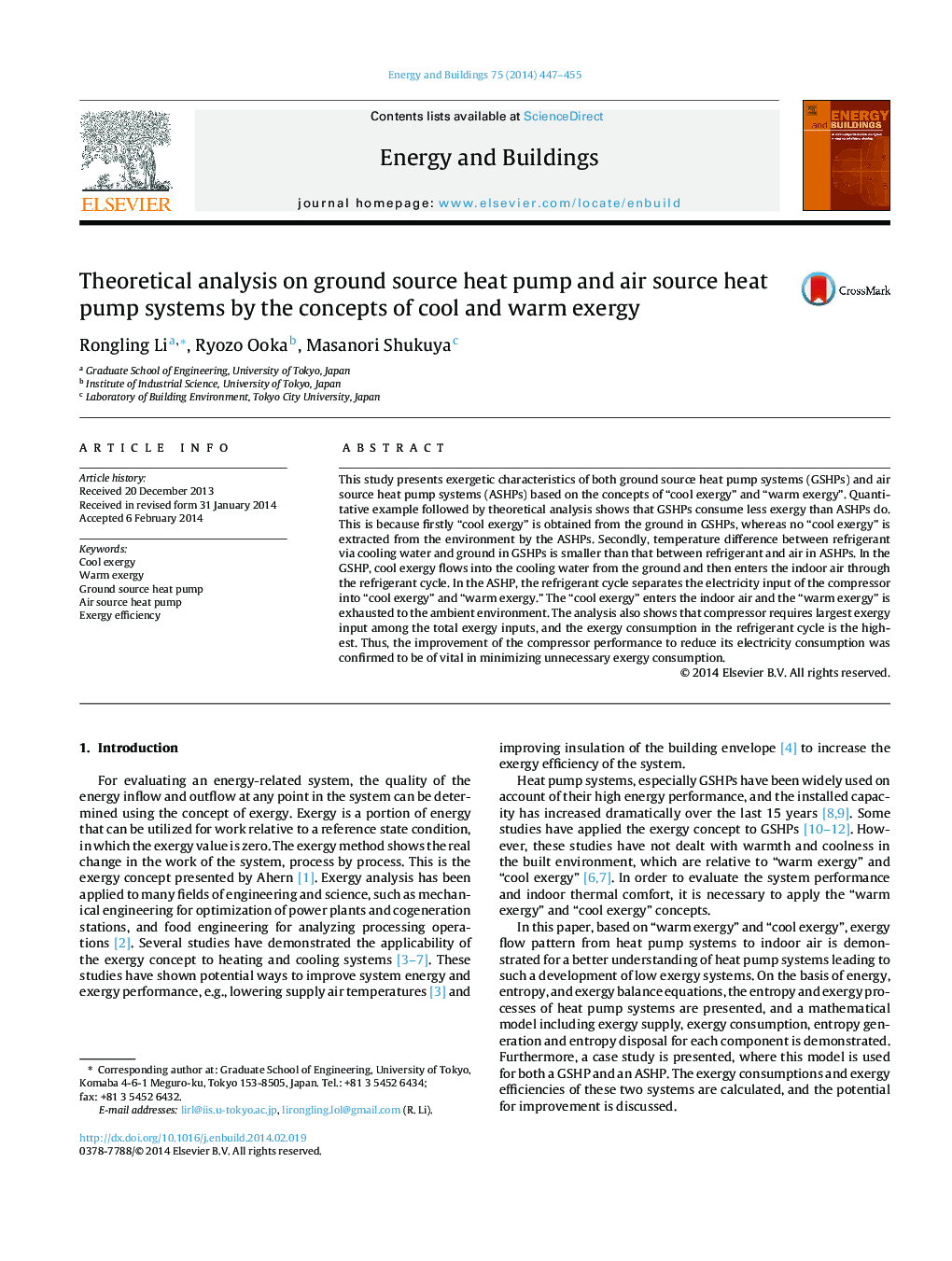| Article ID | Journal | Published Year | Pages | File Type |
|---|---|---|---|---|
| 6734005 | Energy and Buildings | 2014 | 9 Pages |
Abstract
This study presents exergetic characteristics of both ground source heat pump systems (GSHPs) and air source heat pump systems (ASHPs) based on the concepts of “cool exergy” and “warm exergy”. Quantitative example followed by theoretical analysis shows that GSHPs consume less exergy than ASHPs do. This is because firstly “cool exergy” is obtained from the ground in GSHPs, whereas no “cool exergy” is extracted from the environment by the ASHPs. Secondly, temperature difference between refrigerant via cooling water and ground in GSHPs is smaller than that between refrigerant and air in ASHPs. In the GSHP, cool exergy flows into the cooling water from the ground and then enters the indoor air through the refrigerant cycle. In the ASHP, the refrigerant cycle separates the electricity input of the compressor into “cool exergy” and “warm exergy.” The “cool exergy” enters the indoor air and the “warm exergy” is exhausted to the ambient environment. The analysis also shows that compressor requires largest exergy input among the total exergy inputs, and the exergy consumption in the refrigerant cycle is the highest. Thus, the improvement of the compressor performance to reduce its electricity consumption was confirmed to be of vital in minimizing unnecessary exergy consumption.
Related Topics
Physical Sciences and Engineering
Energy
Renewable Energy, Sustainability and the Environment
Authors
Rongling Li, Ryozo Ooka, Masanori Shukuya,
